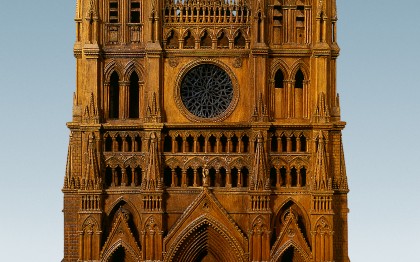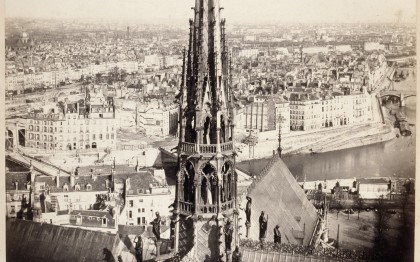In the early 19th century, interest in the Gothic style was limited to a handful of scholars and artists, whose enthusiasm would lead to the emergence of the idea of heritage.
The publication Voyages pittoresques et romantiques (Picturesque and Romantic Journeys in Old France), by Taylor and Nodier, first launched in 1820, listed the most remarkable buildings in France and placed great emphasis on cathedrals. Making the authorities aware of the need to preserve these buildings led to the creation, in 1830, of the Commission des Monuments Historiques (Historic Monuments Commission). Prosper Mérimée, one of the Commission's first inspectors, wanted to monitor the condition of the monuments as well as their restoration.
The first restoration projects provoked fierce debate; a theoretician like Ruskin objected to the very principle of the restoration work, while Viollet-le-Duc advocated the reconstruction of an ideal state based on a study of the monument’s history. Several large mediaeval cathedrals became 19th century cathedrals; Notre Dame de Paris was endowed with its monumental spire in 1859.
Two vast restoration campaigns were carried out in Rouen, resulting in a prevalence of Neo-Gothic décor, for example the façade of St Ouen abbey church, completed in 1851, and the cathedral spire. The architect Alavoine used cast iron to replace the spire destroyed by fire in 1822. This ultra-modern technology allowed Rouen to boast the highest building in the world in 1876, surpassed in 1880 by Cologne Cathedral.
Photography was another technological innovation put to good use by the 'Mission Héliographique', created in 1851. Five photographers (Baldus, Bayard, Le Gray, Mestral and Le Secq) travelled throughout the land documenting important buildings. They were responsible for the first images of cathedrals, which were soon supplemented by Marville, Bacot and the Bisson brothers.
Other processes, such as observational drawings, surveys and casts were also used to create a memory of a rapidly deteriorating heritage. These various endeavours resulted in the creation of both a science and a conscience. Cathedral art made its presence felt in its complexity and richness, as well as its fragility.


